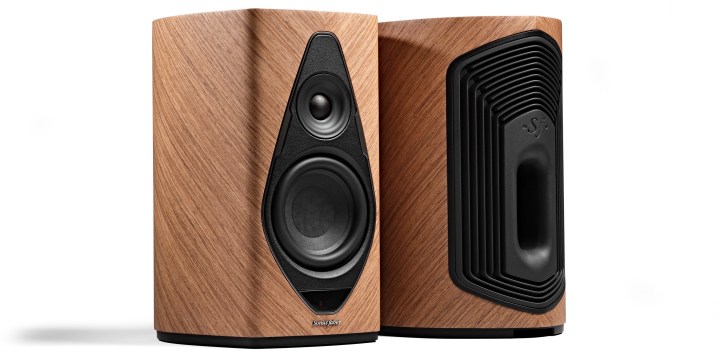
Sonus Faber has just debuted its first set of multi-component wireless speakers, the $3,999 Duetto. These active loudspeakers offer tons of connectivity, both wired and wireless, and can be controlled by the Sonus Faber app, but what really sets these speakers apart is the tech that literally sets them apart. The left and right speakers use ultra-wideband (UWB) wireless technology as their only link, the first time UWB has been used in this way. The Duetto are available starting in October from licensed retailers.
Compared to Wi-Fi and Bluetooth, which are now household names, ultra-wideband (UWB) is an almost totally unknown technology. It’s understandable, as UWB is comparatively brand new. And yet, with its technical superiority over Wi-Fi and Bluetooth for some applications, the Duetto might the first to employ it, but won’t be the last.

UWB offers up to 10 times the bandwidth of Bluetooth, has virtually no latency, uses very little power, and operates within a frequency spectrum that is comparably free of interference, unlike Wi-Fi, which typically uses very congested frequency bands.
For the Sonus Faber Duetto, this means the primary speaker can wirelessly send lossless, hi-res audio at up to 24-bit/96kHz to the secondary speaker, with no lag, at distances of up to 26 feet. This provides a lot of flexibility in terms of placement — the primary speaker needs power and (optionally) a wired connection to a source device, while the secondary speaker only needs power. There’s no need (and in fact no ability) to connect them with a cable.
Beyond their invisible UWB umbilical cord, the Duetto boast many features. The two-way speakers incorporate a 0.7-inch tweeter and a 5.25-inch midwoofer, each of which is powered by discrete amplifiers: a 100-watt class AB amplifier drives the tweeter, while a 205-watt class D amplifier powers the midwoofer. This combo produces a claimed frequency response of 37Hz to 30,000Hz, with a Sonus Faber-designed 1900Hz crossover.

The wooden enclosures are available in two finishes and topped with a leather panel that includes Sonus Faber’s Senso touch controls for volume, input selection, and connections. You can order them with available stands, which cost an additional $749.
Wired connections include HDMI ARC/eARC, optical, RCA analog with line-in and phono modes. There’s also a subwoofer output. On the wireless side of the equation, the Duetto have Wi-Fi, with support for Apple AirPlay 2, Chromecast, Tidal Connect, Spotify Connect, and Qobuz, plus they’re Roon-ready. You can also use Bluetooth for audio streaming, with support for aptX HD from compatible phones and other devices.



